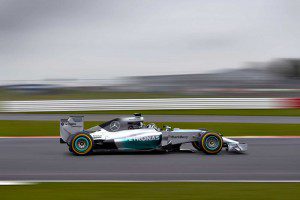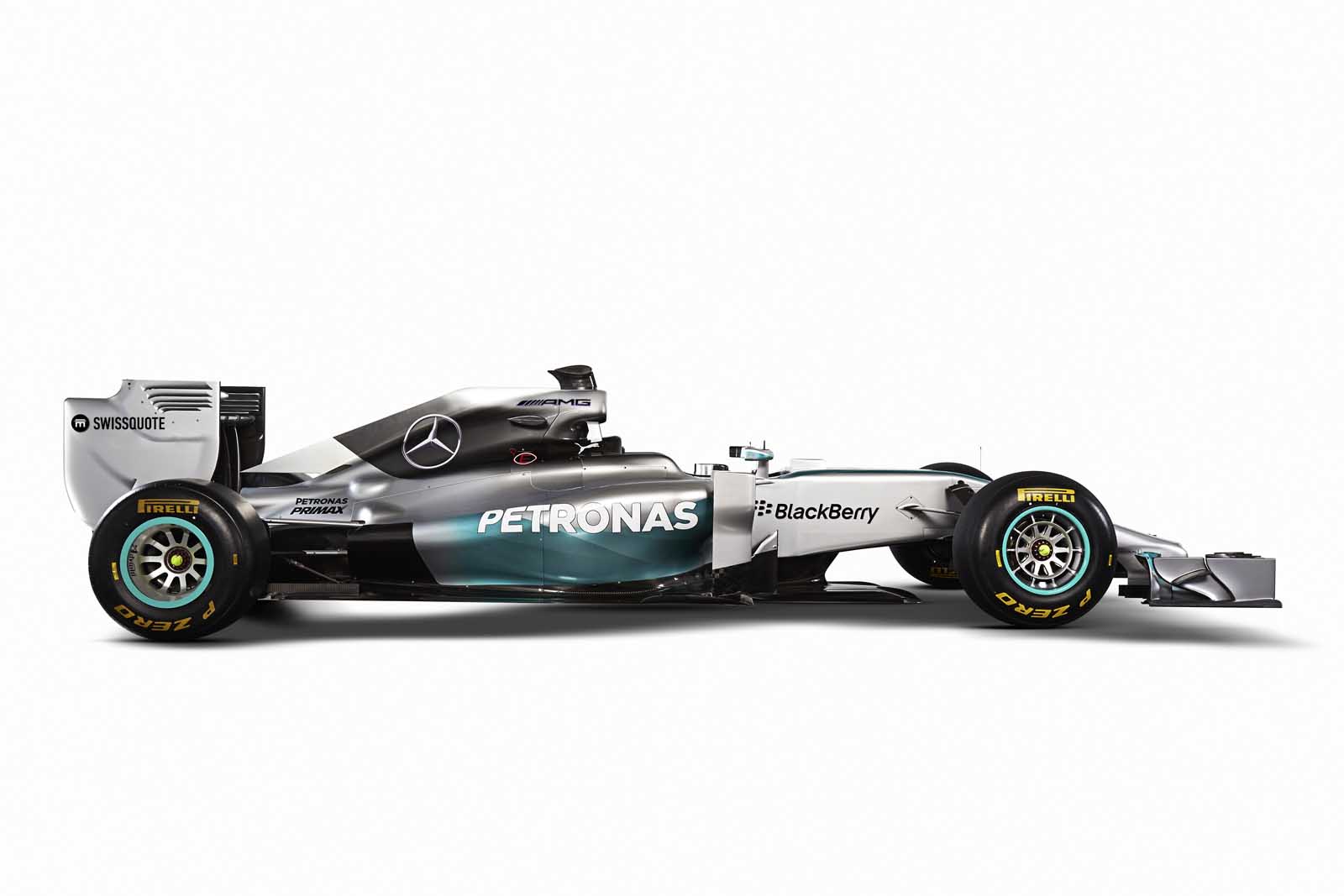 |
 |
 |
||
 |
 |
 |
||
 |
 |
|||
The new Formula 1 car of the Mercedes AMG Petronas F1 team has undergone massive changes in line with the new rules in Formula 1. Both the engine and aerodynamics & vehicle dimensions had to be fundamentally changed.
Front wing
Most visibly, the width of the front wing has been reduced from 1800 mm to 1650 mm. The height of the nose has also been reduced from a maximum of 550 mm anno 2013 to a new 185 mm. These changes have a significant impact on the overall aerodynamics of the vehicle.
Rear wing
The lower rear wing has been removed, the rear wing box has been reduced by 10% and the DRS slot has become larger.
Gearbox
The transmission had to be revised. It now has to be used at six races. The racers currently have a transmission with 8 forward gears and 1 reverse gear. The changed racing conditions force the engineers to pay special attention to the durability of the gearbox and to make appropriate modifications.
Engine - Power Unit
What is revolutionary is the fact that the company has moved away from the classic engine design and now provides an integrated power unit. The previous 2.4-liter V8 engines are replaced by a 1.6-liter V6 turbo engine with integrated hybrid energy recovery (ERS) - together they form the power unit. Each driver receives 5 power units per season. In detail, the power unit is made up of 6 systems: The actual combustion engine, the engine-generation-unit-kinetic, the engine-generation-unit-heat, the energy storage system, the turbocharger and the control electronics make up the power unit. The maximum speed has been reduced to 15,000 rpm, which reduces overall friction and increases efficiency. The reduction in gech speed and size are the key changes in the design of the new "engine". The new ERS is a continuation of the previous KERS system and delivers twice as much power as in 2013.
[toggle_content title="Vehicle dimensions" class=""][ws_table id="13″][/toggle_content]
[toggle_content title="Transmission" class=""][ws_table id="14″][/toggle_content]
[toggle_content title="Technical data" class=""][ws_table id="15″][/toggle_content]





